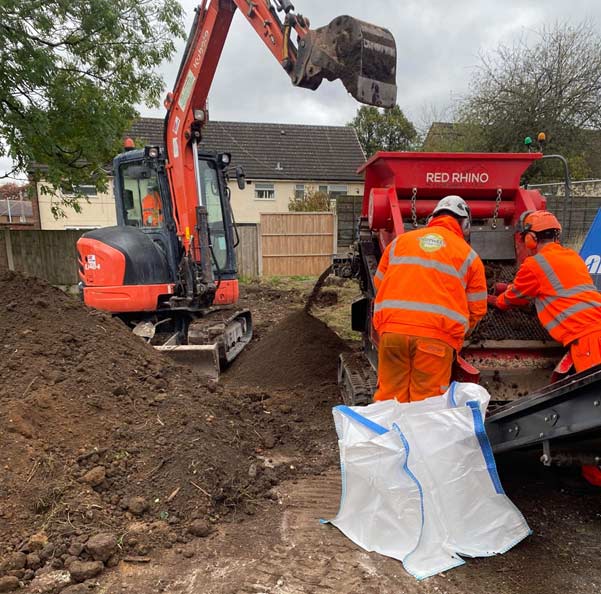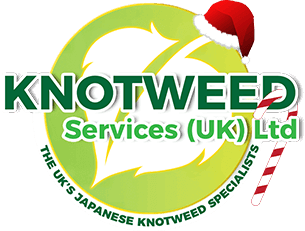JAPANESE KNOTWEED REMOVAL Southend-on-Sea
9
LIVE KNOTWEED JOBS IN Southend-on-Sea
44
SUCCESSFUL KNOTWEED REMOVAL PROJECTS IN Southend-on-Sea
100%
SUCCESSFUL PROPERTY SALES AFTER TREATMENT
8
Southend-on-Sea BASED KNOTWEED STAFF
NO OTHER JAPANESE KNOTWEED COMPANIES IN Southend-on-Sea HAVE OUR TRACK RECORD
Knotweed services is a highly professional company with years of experience which specialise in Japanese knotweed removal, control, and treatment for properties located in or around Southend-on-Sea.
Knotweed Services is a member of the PCA, a trade body for treating and controlling invasive weeds. We follow the latest treatment and removal techniques for Japanese knotweed removal.
Knotweed Services has removed thousands of Japanese knotweed plants in and around Southend-on-Sea and the surrounding areas. We use only the most effective treatments to ensure that your knotweed problem is completely eradicated.
The One And Only Japanese Knotweed Treatment Service
We offer a complete service to deal with Japanese knotweed on residential and commercial properties. Contact us for a survey and we’ll give you the information and help you need to make an informed decision.
Knotweed Services has the necessary expertise to help you manage your Japanese Knotweed infestation cost-effectively, allowing you to get on with other aspects of your project.
How bad is Japanese Knotweed?
- Japanese Knotweed poses a serious threat to the structure of your building or property because it can grow through concrete and tarmac.
- Lenders often deny mortgages against buildings affected by Japanese knotweed.
- Knotweed obstructs both visibility and access to infrastructure, creating a massive nuisance for commercial property owners.
For customers in Southend-on-Sea with Japanese Knotweed, we should be your very first call. We’ll always ensure that the knotweed is removed in its entirety and our warranty guarantees (insurance backed guarantee available) against regrowth.



FREE IDENTIFICATION
Fill in the form below, attach your pictures and we’ll let you know if the plant in your picture is Japanese Knotweed.
Call us ASAP to begin the treatment and control of your infestation in Southend-on-Sea
Call us on: 0121 725 6348 or 0800 689 4146 for an swift estimate
Knotweed Services is here to help you.
RESIDENTIAL JAPANESE KNOTWEED REMOVAL Southend-on-Sea.
WHAT YOU NEED TO KNOW ABOUT JAPANESE KNOTWEED REMOVAL Southend-on-Sea
As Japanese knotweed infestations vary considerably from property to property, it’s not surprising that approaches to treating and controlling the weed will too. It may be necessary to use one method or a combination of different approaches.
As knotweed is a living organism, our technicians are trained to consider all factors affecting the removal process. A dedicated team of experts are on hand to advise you.
— JAPANESE KNOTWEED REMOVAL OPTIONS AVAILABLE IN Southend-on-Sea

FOLIAR SPRAYING *
The most common treatment for Japanese Knotweed is the spraying of powerful chemicals with a knapsack. We make sure that other plants aren’t damaged. The best time to spray Japanese Knotweed is in the spring.

FOLIAR LEAF WIPING *
With this treatment for Japanese knotweed, we use a tool to “physically wipe” our chemicals onto the plant’s leaves. Because of the accuracy of this application, we frequently allow a higher chemical concentration.

STEM INJECTION
We inject a small amount of herbicide straight into the invasive weed. Because it is injected directly into the Japanese Knotweed, this is the most devious way of elimination. It isn’t affected by the weather.

BIOMASS REDUCTION
With biomass, we simply remove the soil that is infested rather than excavating the entire area that has been affected by Japanese knotweed. The soil may be reused, and it is a great way to reduce Japanese knotweed. minimising landfill usage.

CROWN REMOVAL
Crown and stems can regenerate, and even small bits of chopped crown or stem can regenerate and become a new invasive weed; removing these from the equation is a fantastic method.
— COMMERCIAL TREATMENT OPTIONS AVAILABLE IN Southend-on-Sea

SOIL SCREENING
A tried-and-true system that has been utilised on hundreds of sites across the UK.
The Japanese knotweed rhizome material is removed from the soil material using the screening procedure. The Japanese knotweed debris is then either transferred to a licenced landfill at a substantially reduced disposal rate or burnt on site using an Environment Agency or Natural Resources Wales D6 exemption.
The cleaned soils can subsequently be used elsewhere, mainly in soft landscaping areas where they will not interfere with construction.
Due to fewer vehicle transfers to the landfill, this can greatly minimise landfill and backfill expenses while also helping to reduce the carbon footprint on site.

BIOSECURITY SUPERVISION
We could send a biosecurity specialist to your site to keep an eye on any soil movements or excavations that can disturb Japanese knotweed.
We can set up a location at the site entry where individuals can wash their boots and equipment as part of these precautions. All toolbox discussions, which will be signed by all on-site contractors involved in the operation, will be provided to the principal contractor by us.
Where biosecurity is required, we may offer ad hoc geotextile barriers.
We will deliver a thorough biosecurity report to the client after the task is finished.
This approach can be utilised in conjunction with several on-site therapy approaches.

EXCAVATION AND DISPOSAL
This treatment method is ideal where time constraints are present and there’s no other option other than to remove both the Japanese Knotweed and contaminated soil to a registered landfill.
By removing all traces of the infestation quickly, this offers a rapid solution to your problem and allows your commercial project to begin groundwork’s almost straight away. When time is of the essence, there is no quicker Japanese Knotweed removal/treatment method.
Any waste taken off-site will be done so with a licensed waste carrier to a suitably authorised landfill site.

CELL BURIAL
Cell burial comprises of moving Knotweed contaminated soil from one location on site, burying it in an excavated pit which is lined with a root barrier membrane, in a different position on the site.
The burial requirements for Japanese Knotweed are as follows:
- The Environment Agency recommends that the top of the burial cell should be a minimum of 2 metres below ground level.
- The overall depth of the burial pit should be in excess of 5 metres deep. All root barrier seams are welded together forming an encapsulated cell from which the Japanese Knotweed cannot escape. Clean soil is then used to backfill on top of the cell.
- To prevent accidental disturbance of the burial site, it is recorded on all site plans and future land owners should be made aware of the location.

STOCKPILE & TREAT
Bunding is the method of relocating contaminated Japanese Knotweed soil to a different area of the site being treated. A bund is a shallow area of the contaminated soil, typically 0.5m deep.
The bund can either be raised, on top of the ground, or placed within an excavation to make the surface flush with the surrounding area.
The purpose of the bund is to move the Japanese Knotweed to an area of the site that is not used. This ‘buys time’ for treatment that would not be possible where the Japanese Knotweed was originally located.|Japanese knotweed-contaminated soil can be moved to another portion of the site being treated using a technique called bunding. A bund is a patch of polluted soil that is only a few metres deep.
To make the surface flush with the surroundings, the bund can either be lifted, placed on top of the land, or positioned inside an excavation.
The bund’s function is to relocate the Japanese knotweed to an inactive portion of the land. The Japanese knotweed may now be treated, which would not have been possible in its original location.|Bundling is a technique used to move contaminated Japanese Knotweed soil to another portion of the site that is being treated. A bund is a small, often 0.5m-deep region of contaminated soil.
For the surface of the bund to be flush with the surroundings, it can be raised, placed on top of the ground, or positioned inside an excavation.
The Japanese Knotweed will be relocated to a less-used region of the site thanks to the bund. When compared to where the Japanese knotweed was first found, this “buys time” for treatment.

HERBICIDE APPLICATION
At Knotweed Services we can provide the client with bespoke treatment plans depending on the locations of the Japanese knotweed.
These plans can work in conjunction with other methods of treatment where access is limited to pedestrian movements i.e., embankments or existing pathways within a site.
This will normally consist of up to 3 visits per annum to apply herbicide by either foliar spray technique or stem injection during the growing season over a period of 3 years, with a monitoring period of 2 years thereafter.
We would select the appropriate herbicides depending on the surrounding foliage or environmental constraints.
After each visit a full treatment record would be provided with photos showing the progress of the works and then an annual report.
